Test Bank For Nursing: A Concept-Based Approach to Learning V(1,2and3) 2nd Edition Pearson Education
$20.00 & Free Shipping
Free shipping on orders over $50!
- Satisfaction Guaranteed
- No Hassle Refunds
- Secure Payments
Description
Table of Contents
VOLUME 1
PART I: Biophysical Modules
Module 1: Acid-Base Balance
The Concept of Acid-Base Balance
Exemplar 1.1 Metabolic Acidosis
Exemplar 1.2 Metabolic Alkalosis
Exemplar 1.3 Respiratory Acidosis
Exemplar 1.4 Respiratory Alkalosis
Module 2: Cellular Regulation
The Concept of Cellular Regulation
Exemplar 2.1 Cancer
Exemplar 2.2 Anemia
Exemplar 2.3 Breast Cancer
Exemplar 2.4 Colorectal Cancer
Exemplar 2.5 Leukemia
Exemplar 2.6 Lung Cancer
Exemplar 2.7 Prostate Cancer
Exemplar 2.8 Sickle Cell Disease
Exemplar 2.9 Skin Cancer
Module 3: Comfort
The Concept of Comfort
Exemplar 3.1 Acute and Chronic Pain
Exemplar 3.2 End-of-Life Care
Exemplar 3.3 Fatigue
Exemplar 3.4 Fibromyalgia
Exemplar 3.5 Sleep-Rest Disorders
Module 4: Digestion (NEW!)
The Concept of Digestion
Exemplar 4.1 Gastroesophageal Reflux Disease (NEW!)
Exemplar 4.2 Hepatitis (NEW!)
Exemplar 4.3 Malabsorption Disorders (NEW!)
Exemplar 4.4 Pancreatitis (NEW!)
Exemplar 4.5 Pyloric Stenosis (NEW!)
Module 5: Elimination
The Concept of Elimination
Exemplar 5.1 Benign Prostatic Hyperplasia
Exemplar 5.2 Bladder Incontinence and Retention
Exemplar 5.3 Bowel Incontinence, Constipation, and Impaction
Exemplar 5.4 Urinary Calculi
Module 6: Fluids and Electrolytes
The Concept of Fluids and Electrolytes
Exemplar 6.1Acute Renal Failure
Exemplar 6.2 Chronic Kidney Disease
Exemplar 6.3 Fluid and Electrolyte Imbalance
Module 7: Health, Wellness, and Illness
The Concept of Health, Wellness, and Illness
Exemplar 7.1 Physical Fitness and Exercise
Exemplar 7.2 Oral Health
Exemplar 7.3 Normal Sleep-Rest Patterns
Module 8: Immunity
The Concept of Immunity
Exemplar 8.1 HIV and AIDS
Exemplar 8.2 Hypersensitivity
Exemplar 8.3 Rheumatoid Arthritis
Exemplar 8.4 Systemic Lupus Erythematosus
Module 9: Infection
The Concept of Infection
Exemplar 9.1 Cellulitis
Exemplar 9.2 Conjunctivitis
Exemplar 9.3 Influenza
Exemplar 9.4 Otitis Media
Exemplar 9.5 Pneumonia
Exemplar 9.6 Sepsis
Exemplar 9.7Tuberculosis
Exemplar 9.8 Urinary Tract Infection
Module 10: Inflammation
The Concept of Inflammation
Exemplar 10.1 Appendicitis
Exemplar 10.2 Gallbladder Disease
Exemplar 10.3 Inflammatory Bowel Disease
Exemplar 10.4 Nephritis
Exemplar 10.5 Peptic Ulcer Disease
Module 11: Intracranial Regulation
The Concept of Intracranial Regulation
Exemplar 11.1 Increased Intracranial Pressure
Exemplar 11.2 Seizure Disorders
Module 12: Metabolism
The Concept of Metabolism
Exemplar 12.1 Diabetes
Exemplar 12.2 Diabetes in Children (NEW!)
Exemplar 12.3 Liver Disease
Exemplar 12.4 Obesity
Exemplar 12.5 Osteoporosis
Exemplar 12.6 Thyroid Disease
Module 13: Mobility
The Concept of Mobility
Exemplar 13.1 Back Problems
Exemplar 13.2 Fractures
Exemplar 13.3 Hip Fractures
Exemplar 13.4 Multiple Sclerosis
Exemplar 13.5 Osteoarthritis
Exemplar 13.6 Parkinson Disease
Exemplar 13.7 Spinal Cord Injury
Module 14: Nutrition (NEW!)
The Concept of Nutrition
Module 15: Oxygenation
The Concept of Oxygenation
Exemplar 15.1 Acute Respiratory Distress Syndrome
Exemplar 15.2 Asthma
Exemplar 15.3 Chronic Obstructive Pulmonary Disease
Exemplar 15.4 Respiratory Syncytial Virus/Bronchiolitis
Exemplar 15.5 Sudden Infant Death Syndrome
Module 16: Perfusion
The Concept of Perfusion
Exemplar 16.1 Cardiomyopathy
Exemplar 16.2 Congenital Heart Defects
Exemplar 16.3 Coronary Artery Disease
Exemplar 16.4 Deep Venous Thrombosis
Exemplar 16.5 Disseminated Intravascular Coagulation
Exemplar 16.6 Heart Failure
Exemplar 16.7 Hypertension
Exemplar 16.8 Life-Threatening Dysrhythmias
Exemplar 16.9 Peripheral Vascular Disease
Exemplar 16.10 Pregnancy-Induced Hypertension
Exemplar 16.11 Pulmonary Embolism
Exemplar 16.12 Shock
Exemplar 16.13 Stroke
Module 17: Perioperative Care (NEW!)
The Concept of Perioperative Care
Module 18: Sensory Perception
The Concept of Sensory Perception
Exemplar 18.1 Hearing Impairment
Exemplar 18.2 Cataracts
Exemplar 18.3 Eye Injuries
Exemplar 18.4 Glaucoma
Exemplar 18.5 Macular Degeneration
Exemplar 18.6 Peripheral Neuropathy
Module 19: Sexuality
The Concept of Sexuality
Exemplar 19.1 Erectile Dysfunction
Exemplar 19.2 Family Planning
Exemplar 19.3 Menopause
Exemplar 19.4 Menstrual Dysfunction
Exemplar 19.5 Responsible Sexual Behavior
Exemplar 19.6 Sexually Transmitted Infections
Module 20: Thermoregulation
The Concept of Thermoregulation
Exemplar 20.1 Hyperthermia
Exemplar 20.2 Hypothermia
Module 21: Tissue Integrity
The Concept of Tissue Integrity
Exemplar 21.1 Burns
Exemplar 21.2 Contact Dermatitis
Exemplar 21.3 Pressure Ulcers
Exemplar 21.4 Wound Healing
VOLUME 2
PART II: Psychosocial Modules
Module 22: Addiction
The Concept of Addiction
Exemplar 22.1 Alcohol Abuse
Exemplar 22.2 Nicotine Use
Exemplar 22.3 Prenatal Substance Exposure
Exemplar 22.4 Substance Abuse
Module 23: Cognition
The Concept of Cognition
Exemplar 23.1 Alzheimer Disease
Exemplar 23.2 Confusion
Exemplar 23.3 Schizophrenia
Module 24: Culture and Diversity
The Concept of Culture and Diversity
Module 25: Development
The Concept of Development
Exemplar 25.1 Attention-Deficit/Hyperactivity Disorder
Exemplar 25.2 Autism Spectrum Disorders
Exemplar 25.3 Cerebral Palsy
Exemplar 25.4 Failure to Thrive
Module 26: Family
The Concept of Family
Exemplar 26.1 Family Health Promotion
Exemplar 26.2 Family Response to Health Alterations
Module 27: Grief and Loss
The Concept of Grief and Loss
Exemplar 27.1 Children’s Response to Loss
Exemplar 27.2 Death and Dying
Exemplar 27.3 Older Adult’s Response to Loss
Exemplar 27.4 Perinatal Loss
Module 28: Mood and Affect (UPDATED for DSM-5!)
The Concept of Mood and Affect
Exemplar 28.1 Depression
Exemplar 28.2 Adjustment Disorder with Depressed Mood
Exemplar 28.3 Bipolar Disorders
Exemplar 28.4 Postpartum Depression
Module 29: Self
The Concept of Self
Exemplar 29.1 Feeding and Eating Disorders
Exemplar 29.2 Personality Disorders
Module 30: Spirituality
The Concept of Spirituality
Exemplar 30.1 Morality
Exemplar 30.2 Religion
Exemplar 30.3 Spiritual Distress
Module 31: Stress and Coping
The Concept of Stress and Coping
Exemplar 31.1 Anxiety Disorders
Exemplar 31.2 Crisis
Exemplar 31.3 Obsessive-Compulsive Disorder
Exemplar 31.4 Phobias
Exemplar 31.5 Posttraumatic Stress Disorder
Module 32: Violence
The Concept of Violence
Exemplar 32.1 Abuse
Exemplar 32.2 Assault and Homicide
Exemplar 32.3 Rape and Rape-Trauma Syndrome
Exemplar 32.4 Suicide
Exemplar 32.5 Unintentional Injury: MVCs
PART III: Reproduction Module
Module 33: Reproduction
The Concept of Reproduction
Exemplar 33.1 Antepartum Care
Exemplar 33.2 Intrapartum Care
Exemplar 33.3 Postpartum Care
Exemplar 33.4 Newborn Care
Exemplar 33.5 Prematurity
PART IV: Nursing Domain
Module 34: Assessment
The Concept of Assessment
Module 35: Caring Interventions
The Concept of Caring Interventions
Module 36: Clinical Decision Making
The Concept of Clinical Decision Making
Exemplar36.1The Nursing Process
Exemplar 36.2 The Nursing Plan of Care (NEW!)
Exemplar 36.3 Prioritizing Care
Module 37: Collaboration
The Concept of Collaboration
Exemplar 37.1 Case Management
Exemplar 37.2 Conflict Resolution
Exemplar 37.3 Interdisciplinary Teams
Module 38: Communication
The Concept of Communication
Exemplar 38.1 Groups and Group Communication (NEW!)
Exemplar 38.2 Therapeutic Communication
Exemplar 38.3 Documentation
Exemplar 38.4 Reporting
Module 39: Managing Care
The Concept of Managing Care
Exemplar 39.1Care Coordination
Exemplar 39.2 Cost-Effective Care
Exemplar 39.3 Delegation
Exemplar 39.4 Management Principles
Module 40: Professional Behaviors
The Concept of Professional Behaviors
Exemplar 40.1 Commitment to Profession
Exemplar 40.2 Leadership Principles
Exemplar 40.3 Work Ethic
Module 41: Teaching and Learning
The Concept of Teaching and Learning
Exemplar 41.1 Client/Consumer Education
Exemplar 41.2 Mentoring
Exemplar 41.3 Professional Development
PART V: Healthcare Domain
Module 42: Accountability
The Concept of Accountability
Exemplar 42.1 Competence
Exemplar 42.2 Professional Development
Module 43: Advocacy
The Concept of Advocacy
Module 44: Ethics
The Concept of Ethics
Exemplar 44.1 Ethical Dilemmas
Exemplar 44.2 Patient Rights
Module 45: Evidence-Based Practice
The Concept of Evidence-Based Practice
Module 46: Healthcare Systems
The Concept of Healthcare Systems
Exemplar 46.1 Access to Health Care
Exemplar 46.2 Allocation of Resources
Exemplar 46.3 Emergency Preparedness
Module 47: Health Policy
The Concept of Health Policy
Exemplar 47.1 Accrediting Bodies
Exemplar 47.2 Professional Organizations
Exemplar 47.3 Regulatory Agencies
Exemplar 47.4 Types of Reimbursement
Module 48: Informatics
The Concept of Informatics
Exemplar 48.1 Clinical Decision Support Systems
Exemplar 48.2 Individual Information at Point of Care
Module 49: Legal Issues
The Concept of Legal Issues
Exemplar 49.1 Nurse Practice Acts
Exemplar 49.2 Advance Directives
Exemplar 49.3 HIPAA
Exemplar 49.4 Just Culture (NEW!)
Exemplar 49.5 Mandatory Reporting
Exemplar 49.6 Risk Management
Module 50: Quality Improvement
The Concept of Quality Improvement
Module 51: Safety
The Concept of Safety
Exemplar 51.1 Safety Considerations Across the Life Span (NEW!)
Exemplar 51.2 Workplace Safety (NEW!)
VOLUME 3: SKILLS
Chapter 1 Assessments
(General Assessment)
SKILL 1.1 Assessing Appearance and Mental Status
SKILL 1.2 Measuring Height for Child and Adult
SKILL 1.3 Measuring Weight
SKILL 1.4 Measuring Body Mass Index
SKILL 1.5 Measuring the Newborn’s Head, Chest, and Abdomen
SKILL 1.6 Measuring Length on an Infant and Small Child
(Vital Signs)
SKILL 1.7 Assessing Body Temperature
SKILL 1.8 Assessing an Apical Pulse
SKILL 1.9 Assessing Peripheral Pulses
SKILL 1.10 Assessing Respirations
SKILL 1.11 Assessing the Respiratory Rate of an Infant and Child
SKILL 1.12 Assessing Blood Pressure
SKILL 1.13 Assessing Blood Pressure of Infant and Child
SKILL 1.14 Using a Pulse Oximeter
(Complete Assessment)
SKILL 1.15 Assessing the Skin
SKILL 1.16 Assessing the Hair
SKILL 1.17 Assessing the Nails
SKILL 1.18 Assessing the Musculoskeletal System
SKILL 1.19 Assessing the Neurologic System
SKILL 1.20 Assessing the Skull and Face
SKILL 1.21 Assessing the Eyes and Vision
SKILL 1.22 Assessing Visual Acuity
SKILL 1.23 Assessing the Ears and Hearing
SKILL 1.24 Positioning a Child for an Otoscopic Examination
VARIATION Supine Position
VARIATION Sitting Position
SKILL 1.25 Assessing Hearing Acuity
SKILL 1.26 Assessing the Nose and Sinuses
SKILL 1.27 Assessing the Mouth and Oropharynx
SKILL 1.28 Assessing the Neck
SKILL 1.29 Assessing the Thorax and Lungs
SKILL 1.30 Assessing the Heart and Central Vessels
SKILL 1.31 Assessing the Peripheral Vascular System
SKILL 1.32 Neurovascular Assessment
SKILL 1.33 Assessing the Breasts and Axillae
SKILL 1.34 Assessing the Abdomen
SKILL 1.35 Assessing the Female Genitals and Inguinal Area
SKILL 1.36 Assessing the Male Genitalia and Inguinal Area
SKILL 1.37 Assessing the Anus
Chapter 2 Caring Interventions
(Beds and Activities of Daily Living (ADLs))
SKILL 2.1 Changing an Unoccupied Bed
SKILL 2.2 Changing an Occupied Bed
SKILL 2.3 Providing Oral Care
SKILL 2.4 Providing Special Oral Care for the Unconscious or Debilitated Client
SKILL 2.5 Bathing an Adult or Pediatric Client
SKILL 2.6 Changing Gown for Client with IV
SKILL 2.7 Providing Perineal-Genital Care
SKILL 2.8 Providing Hair Care
SKILL 2.9 Shaving a Male Client
SKILL 2.10 Shampooing Hair
SKILL 2.11 Identifying and Removing the Presence of Lice and Nits (Lice Eggs)
SKILL 2.12 Providing Nail Care
SKILL 2.13 Providing Foot Care
SKILL 2.14 Providing Routine Eye Care
SKILL 2.15 Removing and Cleaning an Artificial Eye (Ocular Prosthesis)
SKILL 2.16 Removing and Cleaning Contact Lenses
SKILL 2.17 Removing, Cleaning, and Inserting a Hearing Aid
(Home Care)
SKILL 2.18 HOME SETTING: Bathing Client in the Home
SKILL 2.19 HOME SETTING: Transferring Client to Tub or Shower
SKILL 2.20 HOME SETTING: Adapting Bedmaking to the Home
SKILL 2.21 HOME SETTING: Providing Wound Care
SKILL 2.22 HOME SETTING: Removing Lice
SKILL 2.23 HOME SETTING: Administering Medications
SKILL 2.24 HOME SETTING: Sterilizing Nondisposable Medication Equipment
(Medication Administration)
SKILL 2.25 Preparing for Medication Administration
SKILL 2.26 Administering Medical Protocol
SKILL 2.27 Using the Narcotic Control System
SKILL 2.28 Using an Automated Dispensing System
SKILL 2.29 Administering Medication Protocol
(Medication Preparation)
SKILL 2.30 Calculating Dosages
SKILL 2.31 Preparing Medications from Ampules
SKILL 2.32 Preparing Medications from Vials
SKILL 2.33 Mixing Medications Using One Syringe
SKILL 2.34 Preparing Injections
SKILL 2.35 Positioning a Child for Injections or Intravenous Access
(Enteral, Eye, Ear, Nose, Inhalation, Topical, Transdermal, Vaginal, and Rectal Routes)
SKILL 2.36 Administering Oral Medications
SKILL 2.37 Administering Medications by Enteral Tube
SKILL 2.38 Administering Sublingual Medications
SKILL 2.39 Administering Ophthalmic Medications
SKILL 2.40 Administering Otic Medications
SKILL 2.41 Administering Nasal Medications
SKILL 2.42 Administering Metered-Dose Inhaler Medications
SKILL 2.43 Administering Dry Powder Inhaled (DPI) Medications
SKILL 2.44 Administering Medication by Nonpressurized (Nebulized) Aerosol (NPA)
SKILL 2.45 Administering Topical Medications
SKILL 2.46 Applying a Transdermal Medication Patch
SKILL 2.47 Administering Vaginal Medications
SKILL 2.48 Administering Rectal Medications
(Parenteral Routes)
SKILL 2.49 Administering Intradermal Injections
SKILL 2.50 Administering Subcutaneous Injections
SKILL 2.51 Administering Subcutaneous Anticoagulates (Heparin, LMWH, Arixtra)
SKILL 2.52 Administering Intramuscular (IM) Injections
SKILL 2.53 Using Z-Track Method
SKILL 2.54 Adding Medications to Intravenous Fluid Containers
SKILL 2.55 Administering Intermittent Intravenous Medication Using a Secondary Set
SKILL 2.56 Administering Intravenous Medications Using IV Push
SKILL 2.57 Administering Intraosseous (IO) Medications
Chapter 3 Cellular Regulation
SKILL 3.1 Assisting with Bone Marrow Aspiration
SKILL 3.2 Administering Blood Transfusions
SKILL 3.3 Administering Blood Components
Chapter 4 Comfort
Acute/Chronic Pain Management
SKILL 4.1 Assessing the Client in Pain
SKILL 4.2 Teaching Controlled Breathing
SKILL 4.3 Teaching Progressive Muscle Relaxation
SKILL 4.4 Providing a Back Massage
SKILL 4.5 Assisting with Guided Imagery
SKILL 4.6 Teaching bedtime strategies to promote and regulate sleep
SKILL 4.7 Managing a TENS Unit
SKILL 4.8 Managing Pain with a PCA Pump
(Heat and Cold Application)
SKILL 4.9 Applying Dry Heat Measures: Hot Water Bottle, Electric Heating Pad, Aquathermia Pad, Disposable Hot Pack
SKILL 4.10 Applying Compresses and Moist Packs
SKILL 4.11 Assisting with a Sitz Bath
SKILL 4.12 Providing Tepid Sponges
SKILL 4.13 Monitoring an Infant Radiant Warmer
SKILL 4.14 Applying Dry Cold Measures: Ice Bag, Ice Collar, Ice Glove, Disposable Cold Pack
SKILL 4.15 Using a Cooling Blanket
SKILL 4.16 Meeting the Physiologic Needs of the Dying Client
Skill 4.17 Performing Postmortem Care
Chapter 5 Digestion
SKILL 5.1 Teaching Stress Reduction Strategies
SKILL 5.2 Teaching Relaxation Strategies
SKILL 5.3 Teaching the Client Lifestyle and Behavioral Modifications
SKILL 5.4 Teaching the Client Dietary Management
VARIATION Teaching the Parents Dietary Management
SKILL 5.5 Using Enteric Contact Precautions
Chapter 6 Elimination
(Assessment – Collecting Specimens)
SKILL 6.1 Collecting a Routine Urine Specimen
SKILL 6.2 Collecting a 24-Hour Urine Specimen
SKILL 6.3 Collecting a Urine Specimen for Culture and Sensitivity by the Clean-Catch Method
VARIATION Obtaining a Urine Specimen from a Closed Drainage System
SKILL 6.4 Obtaining Urine Specimen from an Ileal Conduit
SKILL 6.5 Performing Urine Tests
SKILL 6.6 Using a Bladder Scanner
SKILL 6.7 Obtaining & Testing Stool Specimen
SKILL 6.8 Collecting Stool for Bacterial Culture
SKILL 6.9 Teaching Parents to Test for Pinworms
SKILL 6.10 Collecting Stool for Ova and Parasites
(Bladder Interventions)
SKILL 6.11 Assisting with a Bedpan
SKILL 6.12 Assisting with a Urinal
SKILL 6.13 Assisting Client to the Commode
SKILL 6.14 Applying an External Urinary Device
SKILL 6.15 Performing Urinary Catheterization
SKILL 6.16 Performing Catheter Care and Removal
SKILL 6.17 Performing Bladder Irrigation
VARIATION Open Irrigation Using a Two-Day In-Dwelling Catheter
SKILL 6.18 Maintaining Continuous Bladder Irrigation
SKILL 6.19 Providing Subrapubic Catheter Care
SKILL 6.20 Performing Urinary Ostomy Care
SKILL 6.21 Applying a Urinary Diversion Pouch
(Bowel Interventions)
SKILL 6.22 Developing a Regular Bowel Routine
SKILL 6.23 Inserting a Rectal Tube
SKILL 6.24 Removing Fecal Impaction
SKILL 6.25 Administering an Enema
VARIATION Administering an Enema to an Incontinent Client
VARIATION Administering a Return-Flow Enema
SKILL 6.26 Administering a Retention Enema
SKILL 6.27 Applying a Fecal Ostomy Pouch
SKILL 6.28 Changing a Bowel Diversion Ostomy Appliance
VARIATION Emptying a Drainage Pouch
(Dialysis)
SKILL 6.29 Assisting with Peritoneal Dialysis Catheter Insertion
SKILL 6.30 Conducting Peritoneal Dialysis Procedures
SKILL 6.31 Providing Hemodialysis
SKILL 6.32 Providing Ongoing Care of Hemodialysis Client
SKILL 6.33 Terminating Hemodialysis
SKILL 6.34 Maintaining Central Venous Dual-Lumen Dialysis Catheter (DLC)
(Home Care)
SKILL 6.35 HOME SETTING: Using Clean Technique for Intermittent Self-Catheterization
SKILL 6.36 HOME SETTING: Providing Suprapubic Catheter Care
SKILL 6.37 HOME SETTING: Administering Continuous Ambulatory Peritoneal Dialysis (CAPD)
SKILL 6.38 HOME SETTING: Changing Dressing for a CAPD Client
SKILL 6.39 HOME SETTING: Instructing Client in Colostomy Irrigation
Chapter 7 Fluids and Electrolytes
SKILL 7.1 Monitoring Intake and Output
(Intravenous Therapy)
SKILL 7.2 Establishing Intravenous Infusions
SKILL 7.3 Performing Venipuncture with All Variations
VARIATION Inserting a Butterfly (Winged-Tip) Needle
SKILL 7.4 Regulating Infusion Flow Rate
SKILL 7.5 Using an Infusion Pump or Controller
SKILL 7.6 Using a “Smart” Pump
SKILL 7.7 Using a Syringe Pump (mini-infuser pump)
SKILL 7.8 Maintaining Infusions
SKILL 7.9 Maintaining Intermittent Infusion Devices
SKILL 7.10 Discontinuing Infusion Devices
SKILL 7.11 Maintaining Intraosseous Infusion Adult
VARIATION Maintaining Intraosseous Infusion Child
SKILL: 7.12 Infusing IV Fluids through a Central Line
SKILL 7.13 Assisting with Percutaneous Central Vascular Catheterization
SKILL 7.14 Managing Central Lines
VARIATION Managing the Triple Lumen Catheter
SKILL 7.15 Changing a Central Line Dressing
SKILL 7.16 Working with Implanted Vascular Access Devices
SKILL 7.17 Changing a PICC Line Dressing
Chapter 8 Infection
SKILL 8.1 Hand Hygiene (Medical Asepsis)
VARIATION Using Waterless Antiseptic Agents (Foams or Gels)
VARIATION Hand Hygiene before Sterile Skills
(Personal Protective Equipment (PPE) and Isolation Precautions)
SKILL 8.2 Latex Precautions
SKILL 8.3 Donning & Removing Clean Gloves
SKILL 8.4 Donning and Removing Isolation Attire
SKILL 8.5 Using a Mask
SKILL 8.6 Assessing Vital Signs
SKILL 8.7 Removing Items from Isolation Room
SKILL 8.8 Utilizing Double-Bagging for Isolation
SKILL 8.9 Removing Specimen from Isolation Room
SKILL 8.10 Transporting Isolation Client Outside Room
SKILL 8.11 Removing Soiled Large Equipment from Isolation Room
(Personal Protective Equipment at Home)
SKILL 8.12 Preparing for Client Care
SKILL 8.13 HOME SETTING: Disposing of Waste Material
SKILL 8.14 HOME SETTING: Caring for an AIDS or HIV Client
SKILL 8.15 HOME SETTING: Teaching Preventative Measures
SKILL 8.16 Teaching Safer Practices to IV Drug Users
Chapter 9 Intracranial Regulation
SKILL 9.1 Glasgow Coma Scale
SKILL 9.2 Assisting with Lumbar Puncture
SKILL 9.3 Intracranial Pressure Monitoring and Daily Care
SKILL 9.4 Implementing Seizure Precautions
SKILL 9.5 Management of Seizure Activity
Chapter 10 Metabolism
SKILL 10.1 Assessment for Endocrine Variances
SKILL 10.2 Teaching the Client with Endocrine Variances Dietary Management
SKILL 10.3 Teaching the Client with Endocrine Variances Lifestyle and Behavioral Modification Strategies
SKILL 10.4 Assisting with Paracentesis
(Diabetes)
SKILL 10.5 Teaching the Diabetic Self-Assessment and Care of Feet
SKILL 10.6 Teaching the Diabetic Client Dietary Management
SKILL 10.7 Obtaining a Capillary Blood Specimen and Measuring Blood Glucose
SKILL 10.8 Preparing Insulin Injections
SKILL 10.9 Teaching Blood Glucose Monitoring and Self Administration of Insulin Adult
VARIATION Child
SKILL 10.10 Teaching Client to Use Insulin Delivery System – Insulin Pen
SKILL 10.11 Teaching Use of Insulin Pump
Chapter 11 Mobility
SKILL 11.1 Applying Body Mechanics
SKILL 11.2 Performing Passive Range of Motion Exercises
(Positioning a Client)
SKILL 11.3 Supporting the Client’s Position in Bed
VARIATION Supporting a Client in Fowler’s Position
VARIATION Supporting a Client in the Dorsal Recumbent Position
VARIATION Supporting a Client in the Prone Position
VARIATION Supporting a Client in the Lateral Position
VARIATION Supporting a Client in the Sims’ Position
VARIATION Supine Position
VARIATION Sitting Position
SKILL 11.4 Positioning Nonhospital Bed for Client Care
(Moving and Transferring a Client)
SKILL 11.5 Moving a Client Up in Bed
VARIATION A Client with Limited Strength of the Upper Extremities
SKILL 11.6 Turning a Client to the Lateral or Prone Position in Bed
VARIATION Turning the Client to a Prone Position
SKILL 11.7 Logrolling a Client
VARIATION Using a Turn or Lift Sheet
SKILL 11.8 Assisting the Client to Sit on Side of Bed (Dangle)
VARIATION Teaching a Client How to Sit on the Side of Bed Independently
SKILL 11.9 Transferring Between Bed and Chair
VARIATION Angling the Wheelchair
VARIATION Transferring without a Belt
VARIATION Transferring with a Belt and Two Nurses
VARIATION Transferring a Client with an Injured Lower Extremity
VARIATION Using a Sliding Board or sheet
SKILL 11.10 Transferring between Bed and Stretcher
VARIATION Using a Transfer Board
SKILL 11.11 Using a Hydraulic Lift
SKILL 11.12 Assisting the Client to Ambulate
VARIATION Two Nurses
SKILL 11.13 Transporting the Infant
SKILL 11.14 Transport of the Toddler
(Client Using Assistive Devices)
Assessing for Fall Prevention
SKILL 11.15 Assisting the Client to Use a Cane
SKILL 11.16 Assisting the Client to Use Crutches
VARIATION Four-Point Alternate Gait
VARIATION Three-Point Gait
VARIATION Two-Point Alternate Gait
VARIATION Swing-to Gait
VARIATION Swing-through Gait
VARIATION Getting into a Chair
VARIATION Getting out of a Chair
VARIATION Going up Stairs
VARIATION Going down Stairs
SKILL 11.17 Assisting the Client to Use a Walker
(Traction and Cast Care)
SKILL 11.18 Caring for Clients in Traction
VARIATION Caring for the Client in Skin Traction
VARIATION Skeletal Traction
SKILL 11.19 Applying and Monitoring Skin Traction for a Child
SKILL 11.20 Performing Initial Cast Care
SKILL 11.21 Performing Ongoing Cast Care
VARIATION: Plaster Cast
VARIATION: Synthetic Cast
SKILL 11.22 Performing Care for a Child with a Cast
Chapter 12 Nutrition
Kozier: Nutritional Variations Throughout the Life Cycle p 1257-1260; Lifespan Considerations Nutrition p. 1263-1264;
SKILL 12.1 Taking a Nutritional Assessment
SKILL 12.2 Assisting an Adult to Eat
SKILL 12.3 Assisting the Dysphagic Client to Eat
(Nutrition via Tube)
SKILL 12.4 Inserting a Nasogastric Tube
SKILL 12.5 Flushing/Maintaining a Nasogastric NG (Tube)
SKILL 12.6 Performing Gastric Lavage
SKILL 12.7 Removing a Nasogastric Tube
SKILL 12.8 Administering a Tube Feeding
VARIATION Feeding Bag (Open System)
VARIATION Syringe (Open System)
VARIATION Prefilled Bottle with Drip Chamber (Closed System)
VARIATION Continuous-Drip Feeding
SKILL 12.9 Administering a Gastrostomy or Jejunostomy Feeding
SKILL 12.10 Providing Continuous Feeding via Small-Bore Nasointestinal/Jejunostomy Tube
(Nutrition via IV Infusion)
SKILL 12.11 Providing Total Parental Nutrition
SKILL 12.12 Infusing IV Lipids
SKILL 12.13 Administering Total Nutrient Admixture (TNA) in the Home
SKILL 12.14 Monitoring Client on TNA
SKILL 12.15 Discontinuing TNA Infusion
Chapter 13 Oxygenation
(Assessment)
SKILL 13.1 Collecting a Sputum Specimen
SKILL 13.2 Obtaining Nose & Throat Specimens
VARIATION For a Throat Specimen
VARIATION For a Nasal Specimen
VARIATION Obtaining a Nasopharyngeal Culture
SKILL 13.3 Measuring Peak Expiratory Flow Rate
(Interventions)
SKILL 13.4 Using an Incentive Spirometer
VARIATION For a Flow-Oriented SMI
VARIATION For All Devices
SKILL 13.5 Pursed-Lip Breathing
SKILL 13.6 Preparing Client for Chest Physiotherapy (CPT)
SKILL 13.7 Assisting with Thoracentesis
(Supplemental Oxygen Therapy)
SKILL 13.8 Using a Portable Oxygen Cylinder
SKILL 13.9 Administering Oxygen by Nasal Cannula, Face Masks, or Face Tent
VARIATION Using a low flow oxygen Nasal Cannula
VARIATION Using a high flow oxygen Nasal Cannula
VARIATION Face Masks
VARIATION Simple Face Mask
VARIATION Venturi Face Mask
VARIATION Partial Rebreathing Mask
VARIATION Non-Rebreathing Mask
VARIATION Face Tent
VARIATION T-Bar (Briggs Adapter) for Tracheostomy Tube
VARIATION Continuous Positive Airway Pressure (CPAP)
VARIATION Biphasic Positive Airway Pressure (BiPAP)
SKILL 13.10 Caring for the Client on a Mechanical Ventilator
(Maintaining a Patent Airway)
SKILL 13.11 Inserting an Oropharyngeal Airway
SKILL 13.12 Inserting a Nasopharyngeal Airway (Nasal Trumpet)
SKILL 13.13 Assisting with Endotracheal Intubation
SKILL 13.14 Inflating a Tracheal Tube Cuff
SKILL 13.15 Providing Care for Client with Endotracheal Tube
SKILL 13.16 Extubating an Endotracheal Tube
SKILL 13.17 Oropharyngeal, Nasopharyngeal and Nasotracheal Suctioning
VARIATION Performing Nasal Pharyngeal Suctioning on an Infant
VARIATION Suctioning an Infant with a Bulb Syringe
SKILL 13.18 Suctioning a Tracheostomy or Endrotracheal Tube
VARIATION Closed Suction System (In-line Catheter)
SKILL 13.19 Providing Tracheostomy Care
VARIATION Using a Disposal Inner Cannula
(Maintaining Lung Expansion)
SKILL 13.20 Assisting with Chest Tube Insertion
Concept Map Assessing Chest Tube Functioning
SKILL 13.21 Maintaining Chest Tube Drainage
SKILL 13.22 Assisting with Chest Tube Removal
(Life Threatening Respiratory Actions)
SKILL 13.23 Clearing an Obstructed Airway
VARIATION Chest Thrusts
SKILL 13.24 Performing Rescue Breathing
SKILL 13.25 Administering External Cardiac Compressions
VARIATION CPR Performed by One Rescuer
VARIATION CPR Performed by Two Rescuers
Chapter 14 Perfusion
SKILL 14.1 Using Digital (direct) Pressure
SKILL 14.2 Using Pressure Dressing
(Anti-Embolic Devices)
SKILL 14.3 Applying Antiemboli Stockings (Graduated Compression Stocking and Elastic Stockings)
SKILL 14.4 Applying Pneumatic Compression Devices
SKILL 14.5 Applying Sequential Compression Devices (SCDs)
(Electrical Conduction in the Heart)
SKILL 14.6 Monitoring Clients on Telemetry (applying ECG Leads)
SKILL 14.7 Interpreting an ECG Strip
SKILL 14.8 Recording a 12-Lead ECG
SKILL 14.9 Monitoring Temporary Cardiac Pacing (Transvenous, Epicardial)
SKILL 14.10 Assisting with Pacemaker Insertion
SKILL 14.11 Maintaining Temporary Pacemaker Function
SKILL 14.12 Providing Permanent Pacemaker Client Teaching
SKILL 14.13 Administering Automated External Defibrillation Adult
(Arterial Line Care)
SKILL 14.14 Performing the Allen Test
SKILL 14.15 Assisting with Arterial Line Insertion
SKILL 14.16 Monitoring Arterial Blood Pressure
SKILL 14.17 Withdrawing Arterial Blood Samples
SKILL 14.18 Removing Arterial Catheter
Chapter 15 Perioperative Care
SKILL 15.1 Teaching Client Deep Breathing Exercises, Turning, Effective Coughing, Splinting Surgical Site, and Leg Exercises for Postoperative Health Maintenance Care
SKILL 15.2 Providing appropriate skin preparation or intestinal preparation for surgery
SKILL 15.3. Performing Surgical Hand Antisepsis/Scrubs
VARIATION Surgical Hand Antisepsis/Hand Scrub Using Alcohol-Based Surgical Hand Rub
(Using Sterile Technique)
SKILL 15.4. Donning Sterile Gown & Gloves (Closed Method)
SKILL 15.5. Preparing the Surgical Site
SKILL 15.6 Preparing the Client for Surgery
SKILL 15.7 Pouring from a Sterile Container
SKILL 15.8 Preparing a Sterile Field Using Pre-Packaged Supplies
SKILL 15.9 Preparing for Dressing Change Using Individual Supplies
SKILL 15.10 Changing a Sterile Dressing
SKILL 15.11 Removing Sutures
SKILL 15.12 Removing Staples
Chapter 16 Reproduction
(Antepartum Care)
SKILL 16.1 Maternal and Newborn Assessments
SKILL 16.2 Assisting with a Pelvic Examination
SKILL 16.3 Assessing Deep Tendon Reflexes and Clonus
SKILL 16.4 Assessment of Fetal Well-Being: Nonstress Test (NST)
SKILL 16.5 Assessment of Fetal Well-Being: Contraction Stress Test (CST)
SKILL 16.6 Assessment of Fetal Well-Being: Biophysical Profile (BPP)
SKILL 16.7 Performing an Intrapartal Vaginal Examination
SKILL 16.8 Administration of Rh Immune Globulin (RhoGAM, HypRho-D)
SKILL 16.9 Assisting during Amniocentesis
(Intrapartum Care)
SKILL 16.10 Assisting with Amniotomy (AROM: Artificial Rupture of Membranes)
SKILL 16.11 Auscultating Fetal Heart Rate
SKILL 16.12 External Electronic Fetal Monitoring
SKILL 16.13 Internal Electronic Fetal Monitoring: Application of Fetal Scale Electrode
SKILL 16.14 Assisting with and Monitoring of Woman Undergoing Induction of Labor with Pitocin
and Cervical Ripening Agents
SKILL 16.15 Assisting with and Caring for the Woman with an Epidural during Labor
SKILL 16.16 Care of the Woman with Prolapsed Cord
(Postpartum Care)
SKILL 16.17 Assessing Postpartum Perineal
SKILL 16.18 Assessing the Uterine Fundus Following Vaginal Birth
SKILL 16.19 Evaluating the Lochia
SKILL 16.20 Assisting with Breastfeeding after Childbirth
(Newborn Care)
SKILL 16.21 Assessing Newborn APGAR Scores
SKILL 16.22 Thermoregulation of the Newborn
SKILL 16.23 Umbilical Cord Clamp: Application, Care, and Removal
SKILL 16.24 Assisting with Circumcision and Providing Circumcision Care
SKILL 16.25 Initial Newborn Bath
SKILL 16.26 The Infant Receiving Phototherapy
Chapter 17 Safety
(Assessment)
SKILL 17.1 Maintaining Nurses’ Safety
SKILL 17.2 Evaluating Client’s Safety
SKILL 17.3 Assessing for Elder Abuse
VARIATION Assessing for Infant/Child Abuse
Assessing Injury Prevention
SKILL 17.4 Assessing Caregiver’s Safety
(Environmental)
SKILL 17.5 Providing Safety for Clients During a Fire
SKILL 17.6 Preventing Thermal/Electrical Injuries
Assessing Environmental Safety
SKILL 17.7 Evaluating the Home Environment
(Immobilizers and Restraints)
SKILL 17.8 Applying a Papoose Board Immobilizer
SKILL 17.9 Applying a Mummy Immobilizer
SKILL 17.10 Applying Wrist or Ankle Restraint
SKILL 17.11 Applying Torso/Belt Restraints
SKILL 17.12 Managing Clients in Restraints
VARIATION Using Alternatives to Restraints
SKILL 17.13 Using a Bed or Chair Exit Safety Monitoring Device
Chapter 18 Tissue Integrity
(Assessment)
SKILL 18.1 Obtaining a Wound Drainage Specimen
VARIATION Obtaining a Specimen for Anaerobic Culture Using a Sterile Syringe and Needle
(Dressings and Binders)
SKILL 18.2 Performing a Dry Dressing Change
SKILL 18.3 Cleaning a Sutured Wound and Changing a Dressing on a Wound with a Drain
SKILL 18.4 Applying Wet-to-Moist Dressings
SKILL 18.5 Applying an Abdominal Binder
SKILL 18.6 Applying Bandages and Binders (Elastic Bandages)
SKILL 18.7 Changing a Dressing – Venous Ulcer
SKILL 18.8 Applying an Unna Boot Dressing
SKILL 18.9 Maintaining Closed Wound Drainage (Jackson-Pratt drain)
(Wound Care)
SKILL 18.10 Preventing Pressure Ulcers
SKILL 18.11 Providing Care with Clients with Pressure Ulcers
SKILL 18.12 Applying Transparent Film Dressing
SKILL 18.13 Irrigating a Wound
SKILL 18.14 Using Alginates on Wounds
SKILL 18.15 Using Hydrocolloid Dressing
SKILL 18.16 Using Electrical Stimulation
SKILL 18.17 Using Noncontact Normothermic Wound Therapy
SKILL 18.18 Using Negative Pressure Wound Therapy (wound VAC)
SKILL 18.19 Applying a Transparent Wound Barrier
SKILL 18.20 Positioning and Exercising the Stump
SKILL 18.21 Shrinking/Molding the Stump

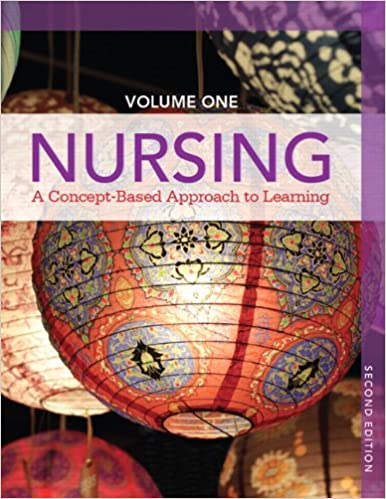
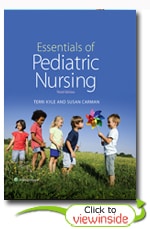
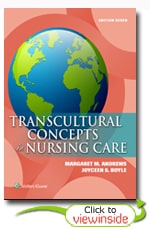
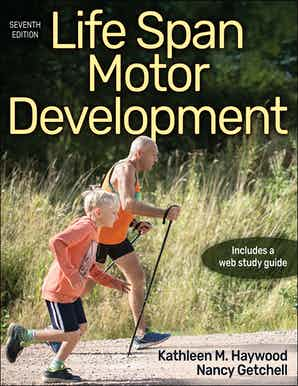
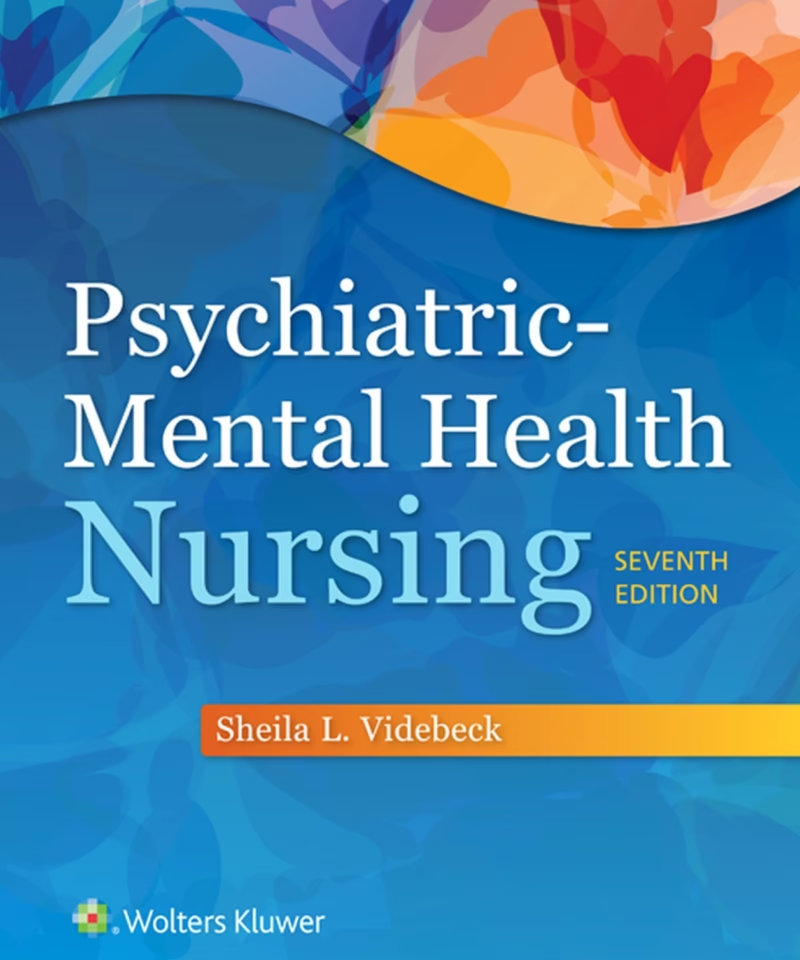
 Test Bank for Health Care Information Systems: A Practical Approach for Health Care Management, 4th Edition Karen A. Wager
Test Bank for Health Care Information Systems: A Practical Approach for Health Care Management, 4th Edition Karen A. Wager